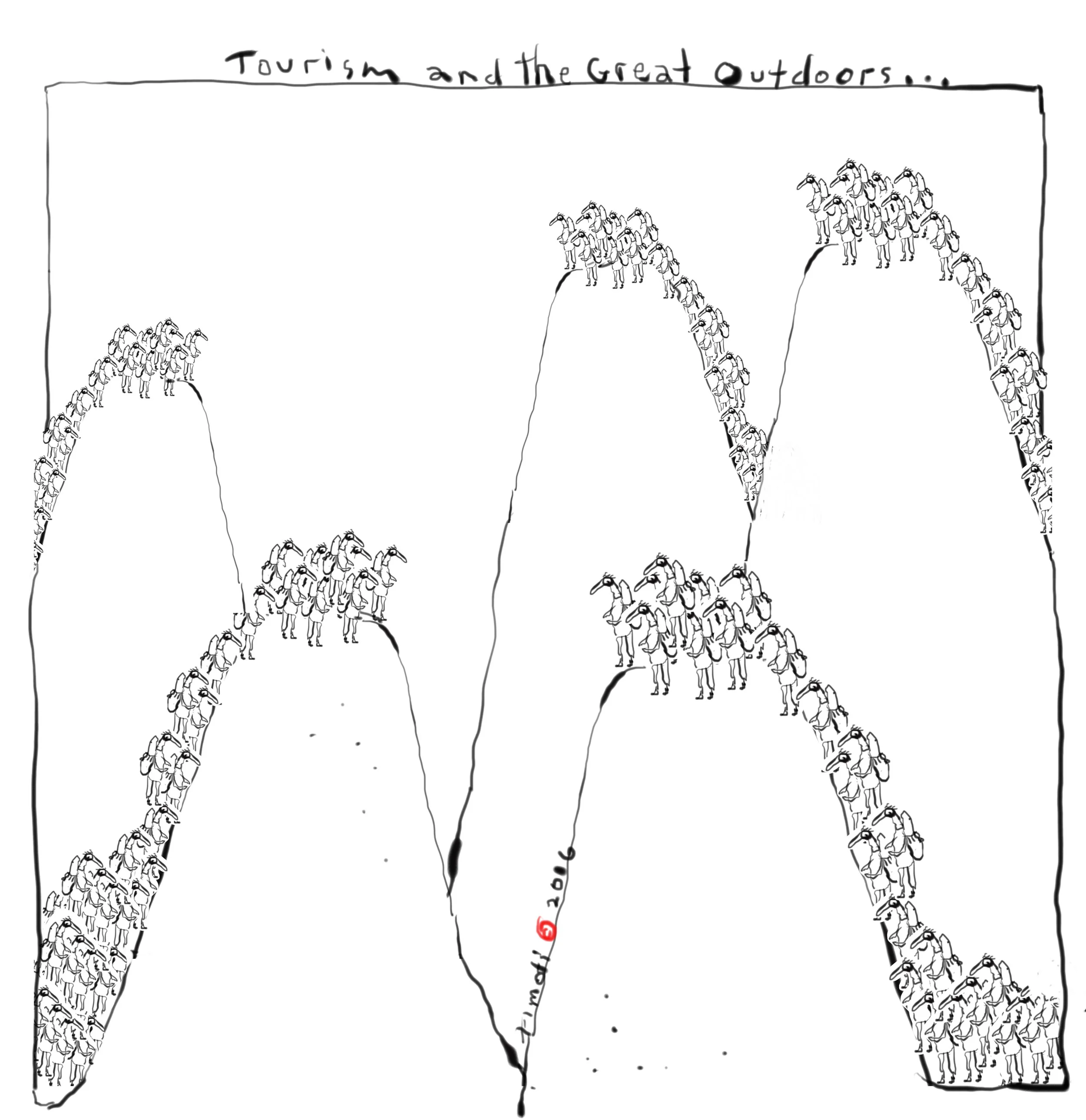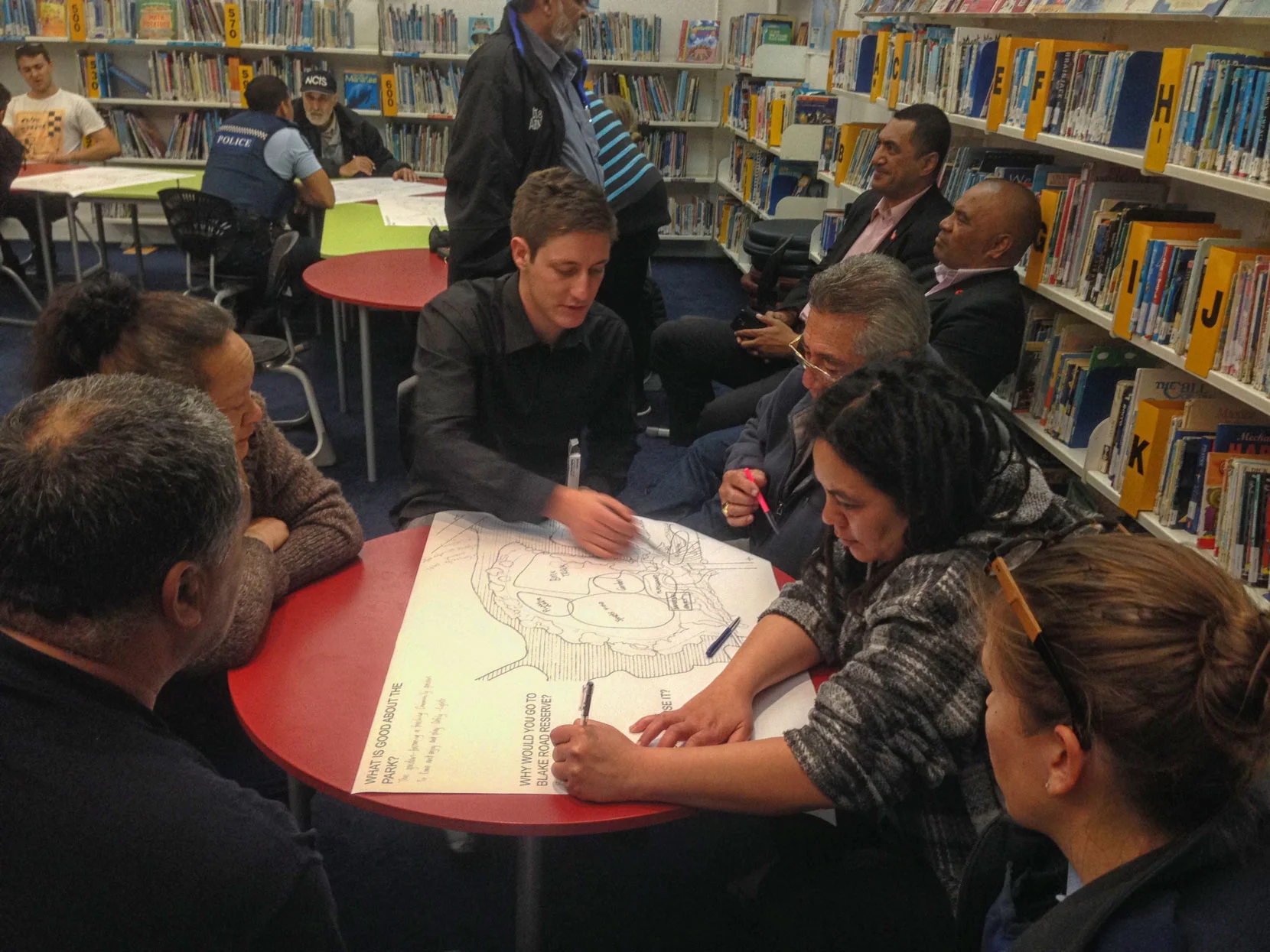URBAN BIODIVERSITY OR URBAN DESERT?
Te Kerekere Roycroft
INTRODUCTION
How can we integrate better with our environment on an urban level? We fill awkward spaces that cannot be used for housing, or a section of grass with trees per head of population. This is often how a lot of our parks came into being, a very human activity-driven allocation process. Parks and green spaces have become a function of utility, a means to enrich the lives of those that live around it. But, I believe they can be so much more. They can be used to broaden the reach of species that have been confined to the edges. Urban areas can be used to enrich the biodiversity and reach of our natural areas, connecting them so they form a network that can be developed. Regenerative urban greening can also alleviate the effects of human activity that only compound and amplify the more they’re allowed to progress. In this essay we will discuss what has gone before and what can happen ifwe take a different focus for priorities in our urban green spaces.
Photo: Mountain range in Hokianga, Northland (photo by Te Kerekere Roycroft)
When current generations build on what has gone before, it creates a stronger system that is self-supporting. When New Zealand was free of human habitation, the country was covered predominantly with forest, patchworked ecosystems that fed from and to each other. A fallen tree becomes food for insect and bacterial life, degrading to base organic material, creating food for seeds of the next generation of trees to grow. Over time, as the ecosystem follows this rhythm, many other benefits to the landscape take place. Soil quality is one benefit, degradation of organic material along with insect and bacterial activities improve the soil profile. A good soil profile enables an equalibrium of generational succession within any given ecosystem. Natural hills, streams and ridges develop becoming the landscape features. Species adapt within these features, to the point that the same genus could look very different evolving from one locality to another; each specimen building on what had come before to create a strength and robustness to carry the species forward. New Zealand’s unique animal life also assumed roles within this cycle, both through pollination and seed dispersal. The fauna of this country became largely ground based, mostly due to the lack of predation. Also, having an abundance of bird and insect life, plants became very adept atengineering their procreative structures to use the native animal life to their advantage. This is adelicate dance, the lead constantly changing, which human arrival and activity has disrupted.
Burning, clearing of forests to flush out prey or make way for agriculture; recontouring of uneven topography to make environments more manageable has always been the answer to turn any area to human use.
What do bush clearance and landscape contouring do to what has been laid down before, since the first settlement of human habitation? New Zealand landscapes have been modified to suit the needs of those peoples who settled there. From our very first arrival, humanity has sought to change this country to suit ourselves. Burning, clearing of forests to flush out prey or make way for agriculture; recontouring of uneven topography to make environments more manageable has always been the answer to turn any area to human use. What we have only begun to understand is what effects our actions have on the landscape: That what we remove can never be artificially replaced or substituted. As virgin areas begin to develop they break the crust of bare earth creating softer soil for deeper penetrating plants to grow. These plants in turn bind soils together and allow water to soak ever deeper through the soil. Generational succession creates a substrate that feeds what comes later. Human activity, the removal of vegetation and upper soil layers, removes the benefits that have built up and been stored. These soils return to the original crust state, new plantings are no longer cared for through stored nutrient reserves and water no longer draws through already pliable soils. This creates weakness that result in the ease of flooding and erosional issues.
Photo: Auckland City taken from Devonport (photo by Te Kerekere Roycroft)
Developing networks for biodiversity to encompass varying types of landscapes ensures survival and progression. Many of the clearances that take place for the development of human society have been done for human habitation, different usage areas can become defined within a city. These spaces have been created with only human use factors in mind. Plantings and natural elements only being used as window dressing. The urban landscape can also be used to widen the biodiversity of the urban species. For too long urban plantings have been underutilised, no consideration on how they can be used to further other goals. Many species have grown through adaptation to local environments, one example can look very different from one part of the country to the next, how they have grown making them unique. Though, as often is the case, plants can be thought of in very one dimensional terms in our urban spaces. They are just used to fill a gap, without regard to how they can be utilised in a wider context. Like many things if they are only used for one purpose, then adaptation cannot make them stronger. A use of a wider variety of species that caters for ecological benefit will create breeding pockets for native fauna. Also, the potential for “stepping stones” for bird species that travel from one patch to another .e.g., from the Waitakere Ranges to Hunua Ranges.
Photo: Rose Garden in Takapuna, Auckland (photo by Te Kerekere Roycroft)
There are many reasons why our urban flora can lack diversity; through funding, priority shifts to choices made on the ground to maximise performance for dollars spent. Councils will always want to get the most from their money, to show the public at large that they know what they’re doing. This has meant a dependance on a set range of species that are known to perform consistantly. This has been the goal for a number of years, it has meant a lack of diversity and a lack of out of the box thinking. A shift on goals to a more holistic and complete approach that takes into consideration the wider context of our natural environment is needed. Diversity is not the only benefit. Creating all-be-it artificial ecosystems to foster a true generationally fueled succession structure within our urban environments, would mean that we would be able to braid these small pockets together to create a network that could improve the imbalance, shifting a focus to using plants to improve the green/grey balance of our urban neighbourhoods as well. Better drainage, improved water and air quality are some of the other pluses. Reducing the degree of waste water/dirty air we pump into streams and bury in the land would also help.
Photo: Mairangi Bay library, Auckland (photo by Te Kerekere Roycroft)
Constant repurposing and re-design of landscapes means successional rhythms are never established. A reliance on an ever decreasing number of species, has decreasing biodiversity in the process being the end result. In our constant need to make better use of space, we often remove the undesirable to make way for the more aesthetically pleasing composition. Acceptance of this transient state has meant we design open spaces that age and degrade, almost needing to be replaced every few years. It has also meant that, like our new subdivisions before settlement soil is constantly moved or manipulated to create beneficial soil conditions to foster the newly planted. What we only realise on an intellectual level, swiftly dismissed, is that the answer was in front of us the whole time. Returning to the older model of allowing natural composition to progress means we will be able to introduce and boost less known species, thereby increasing diversity. This would also increase peoples familiarity with these lesser known species, encouraging them to become more widely used. Along with this if we were to reserve areas that remain untouched once established, native fauna would come to rely on these urban spaces, for not only food but also breeding: meaning, in an urban setting, they would be able to fulfill the purpose of seed dispersers.
Interaction between all the elements that make up landscapes and ecosystems is a very complex issue. There is no way of knowing just how each element influences all others, or what removing/limiting a single one might do. A down side of the urban environment is that almost none of these elements or processes are present. Green landscape elements within the urban ecology are modified to the point of being unrecogisable when compared to naturally occurring counterparts. Aesthetically pleasing, but species range basic, elements are used to fill spaces and serve a specific purpose. Those purposes are in no way in line with what the species evolved to serve. Urban planting draws from a limited palette of species, relying on those that are grown by nurseries. Nurseries grow only what they think will sell, perhaps only growing rarer varieties that are of special interest. It can be conceded that there has been a move to harvesting seed from natural sources, but these are more used in revegetation rather than urban biodiversity. Having our urban areas encroaching into bush areas means that we impact natural environments. This can be through creating competition from weed species, adjacent soil manipulation, to direct damage to native species through introduced predation.
In our constant need to make better use of space, we often remove the undesirable to make way for the more aesthetically pleasing composition.
Plants are used in new developments primarily to “green” up the place, to make a sub-division feel inviting enough that new home buyers will want to move into the area. Plant selection for these applications can be quite uninspired, with no regard given to the wider context of biodiversity. Plant selection is based on the tried and tested species that are known to live with minimal maintenance. Formerly this was more heavily done through exotic species, though this practice is changing. Even if the plant selection is done to try something new, other considerations are not assessed for that species. A species is disconnected from any other that was in its in-situ ecosystem network. Other species that developed in the same area, or adapted in the same areas. Also, specimens with reproductive structures on separate trees are not placed together, effectively making them a genetic dead end. This also means that the process of generational succession is almost absent in an urban setting. No plantings are present long enough to bring on the next generation, and if they were part of maintenance regimes, the offspring or potential for offspring will be removed. Developing species through a generational model means species like Phormium cookianum and Arthropodium cirratum get their breeding structures used for purpose, instead of removed at the least sign of deterioration. This also provides food for native fauna, which can become scarce in urban areas.
Reducing the need to redesign or repurpose existing green spaces; creates a more long term view when it comes to urban areas. Creating urban forests in new developments would be easier to implement, but in preexisting urban areas where land has fallen prey to weed competition, anthropic manipulation, limited attraction of frugivourous birds and patch isolation.
Urban forests would mean that there would develop a haven for species that did not exist, a stopping point for birds to feed and breed on their way to elsewhere while also ensuring its own longevity.
Adopting a more long term approach when considering the layout and longevity of our urban neighbourhoods would improve urban biodiversity by allowing it to develop to a successional purpose. Urban forests would mean that there would develop a haven for species that did not exist, a stopping point for birds to feed and breed on their way to elsewhere while also ensuring its own longevity. This would not be enough on its own, as when land is needed for housing these areas would be the first to be acquired. They need to be made untouchable areas that can never fall prey to “progress”. We should design our urban areas and cities with expansion buffers around natural areas, so when there isa need for land for more housing, these buffers could be used. Creating untouchable area’s free from development, in urban areas, would allow for their survival and development. They would progress through a successional model, as happens in more natural settings.
Auckland could be an example of how urban areas could be used to increase biodiversity through implementing a more holistic approach to how green spaces are treated and managed. As has been discussed, what is needed is the establishment urban green environments that can remain untouched and allowed to establish successional rhythm, so reversing the four detrimental effects of human activity: patch isolation through the removal of support networks; anthropic soil manipultion and soil profile removal; limited attraction for birds because of limited flora species selection and will not be a meaningful resource; and competition through prevalent weed populations. Using protected urban forests to reverse these effects in small areas can create a starting point to build the network to make a whole city more productively biodiverse. The detrimental effect that is most likely to re-occur is weed competition. Many of the revegetation projects that take place rely a lot on the maintenance programmes that Council’s implement. They do walk a fine line between what is needed and what can be done financially. A refocus toward projects succeeding to serve their purpose is needed. Often they degenerate into breeding grounds for noxious species.
CONCLUSION
Our urban environments have reverted to barren ecosystems, having developed a crust through anthropic manipulation, weed species in effect taking the role of pioneer species. We need to use our own natural native assets to retake this position. Bringing natural elements in from the margins, allowing them to cross and perforate our urban enviroments will increase their biodiversity and reach, bringing our native flora and fauna even further into our cultural identity, making this country unique. Using recognised species as an first introductory ambassador for other lesser known species. Using the known to allow the unknown to be more widely used. We also need to properly look after projects once they are instituted, they are often under or over maintained, either by allowing weeds to take over strangling desired plants, or removing native self-seeded specimens and so removing the successional processes. These areas, in the urban environment, also need to allowed to exist to support life and allow them to be relied on as a resource.











